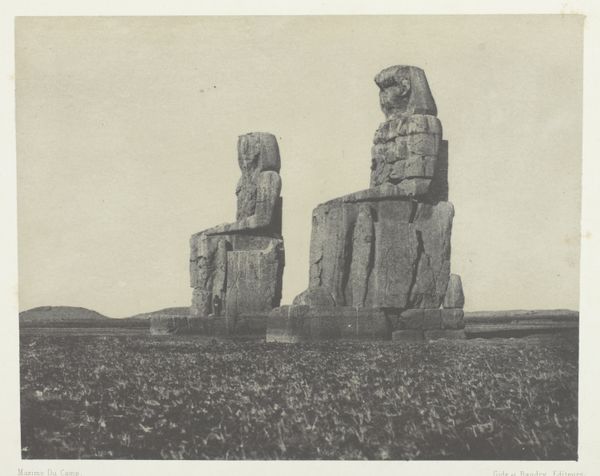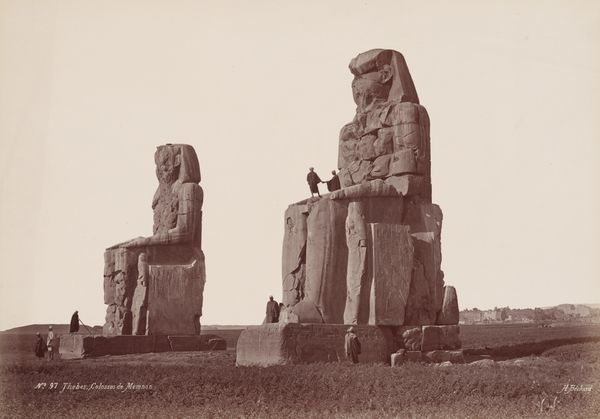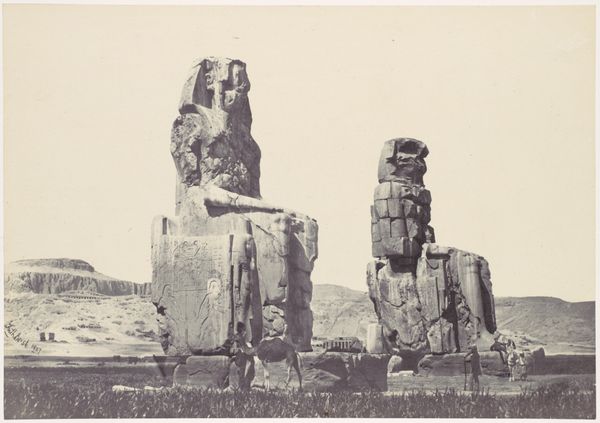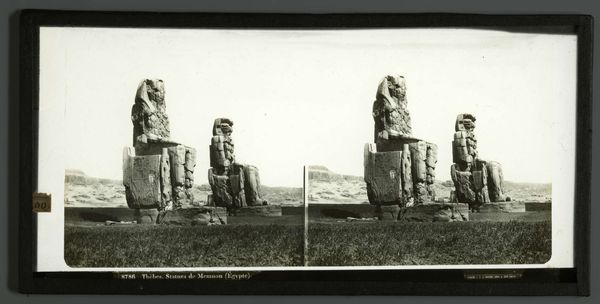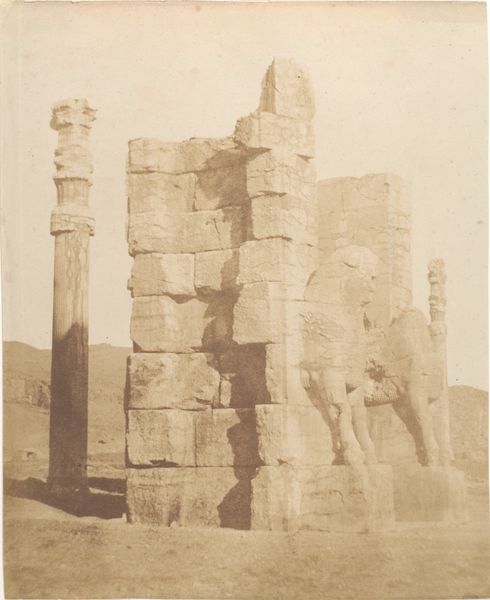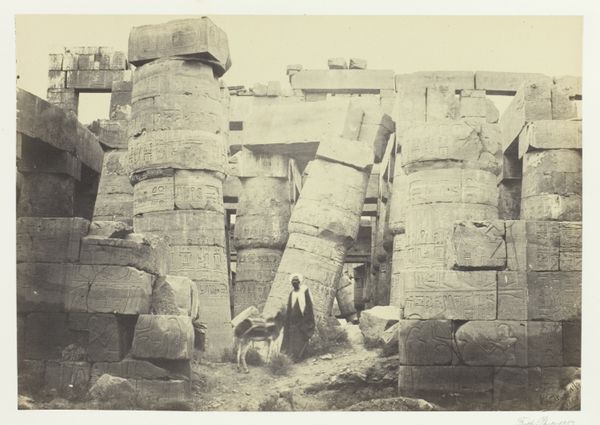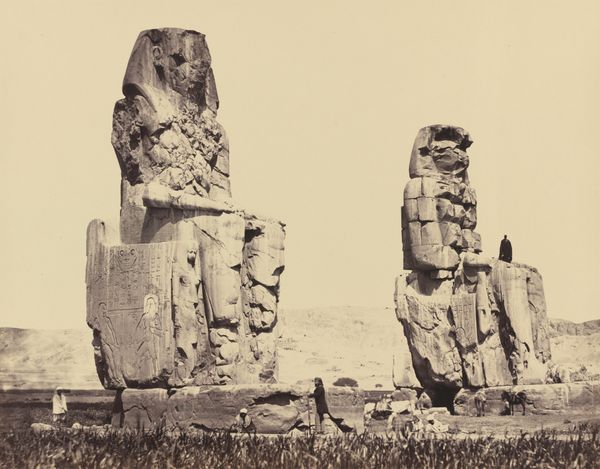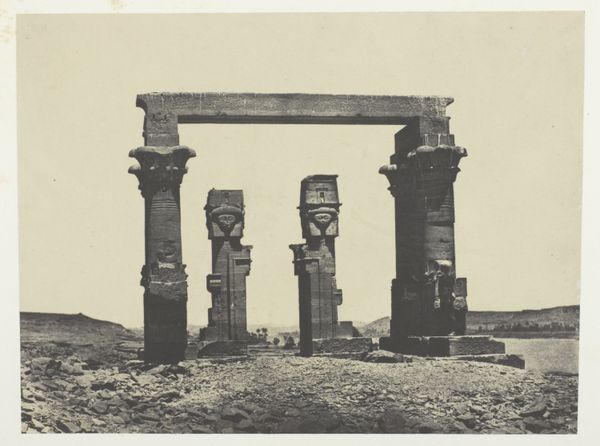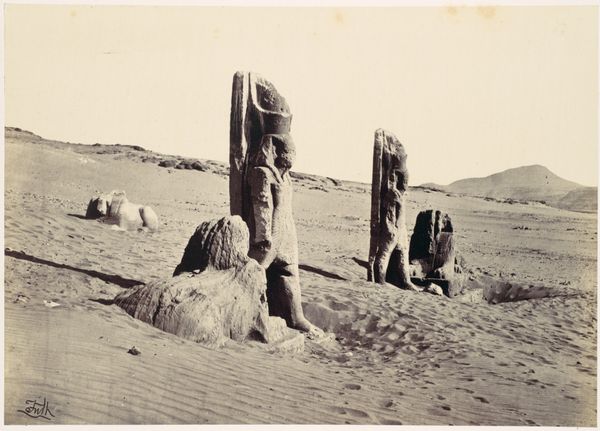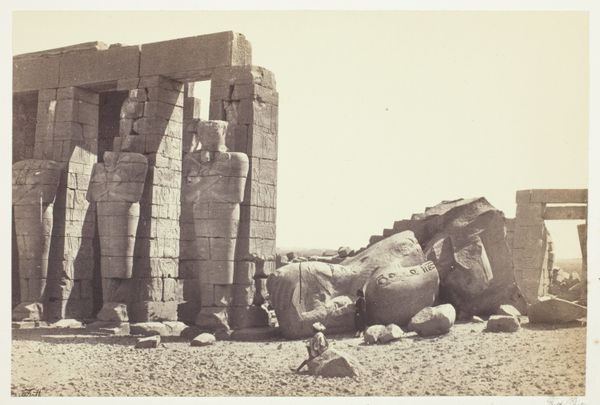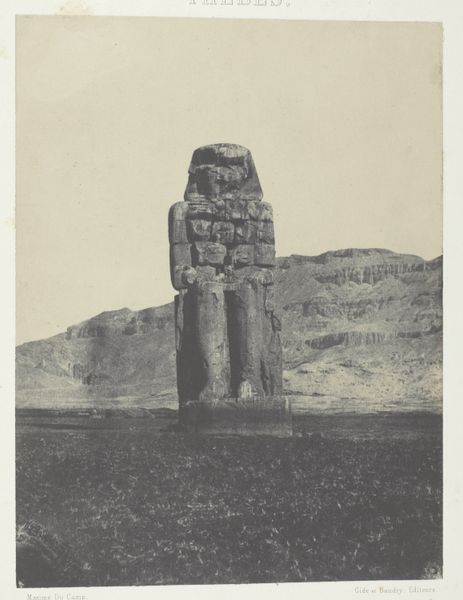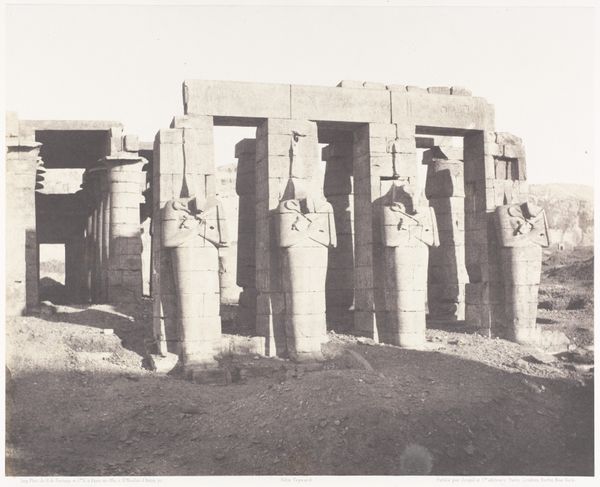
Gournah (Thèbes), Colosses (Celui de Droite, Dit de Memnon) 1851 - 1852
0:00
0:00
photography, sculpture
#
landscape
#
ancient-egyptian-art
#
outdoor photograph
#
photography
#
ancient-mediterranean
#
sculpture
#
monochrome photography
Dimensions: 23.9 x 30.5 cm. (9 7/16 x 12 in.)
Copyright: Public Domain
Editor: This photograph by Félix Teynard, titled "Gournah (Thèbes), Colosses (Celui de Droite, Dit de Memnon)", taken around 1851, shows two colossal statues in a desolate landscape. I’m struck by how these massive figures dwarf everything around them, and the photo itself feels very…stark, almost archaeological. What historical context informs our reading of this photograph? Curator: The key here is understanding how nineteenth-century photography shaped perceptions of ancient sites like Egypt. Teynard was part of a wave of photographers documenting these sites for European audiences, fueling an Egyptomania craze. Editor: So, this image is more than just a record; it's participating in creating a public fascination? Curator: Exactly. Think about the power dynamic inherent in this photographic act. A European photographer capturing and disseminating images of Egyptian monuments back to a Western audience. Who gets to tell the story of this past, and whose version is being seen? Also, notice the desolate landscape around the statues, possibly influencing how people might have viewed Egyptian civilization – ancient, distant, and in decline. It encourages us to consider not only what's shown, but also how the subject is portrayed. Editor: That's a powerful point. It shifts my perspective entirely. It's not just a document but an interpretation, framed by the photographer's cultural lens. Curator: Precisely. How do you think the absence of vibrant colors – given it is a monochrome print – contributed to the narrative? Editor: It adds to that sense of antiquity and distance. It almost feels like looking at a relic rather than a living history. This conversation has really highlighted how photography can be an active agent in shaping historical understanding. Curator: Indeed. Thinking critically about who produces and disseminates images of the past is crucial to understanding their lasting social and political impact.
Comments
No comments
Be the first to comment and join the conversation on the ultimate creative platform.

